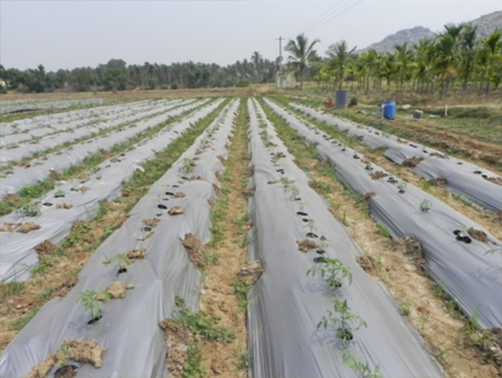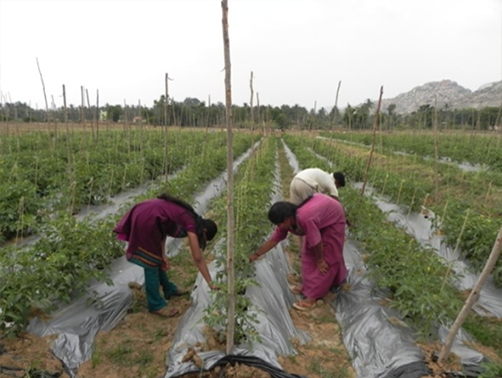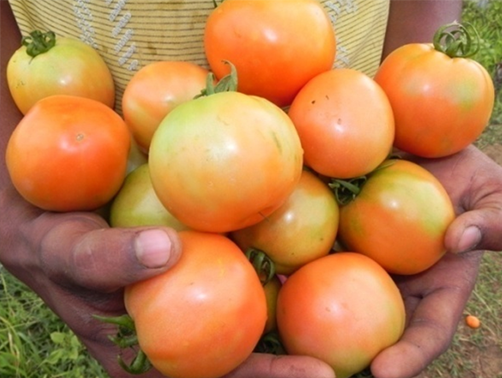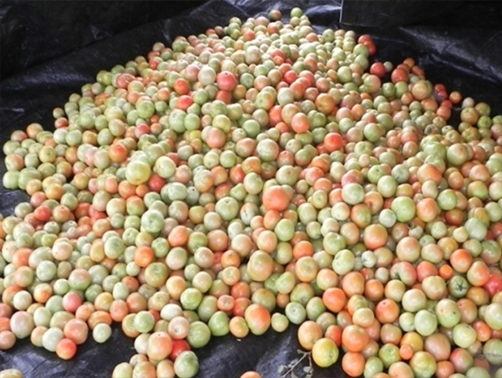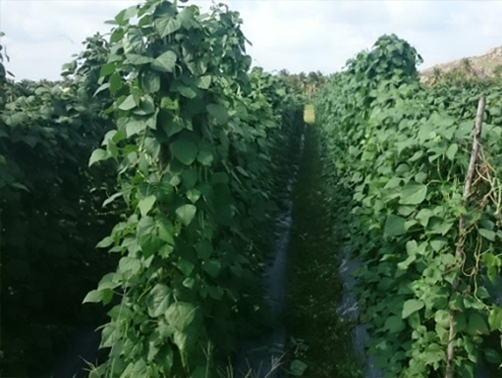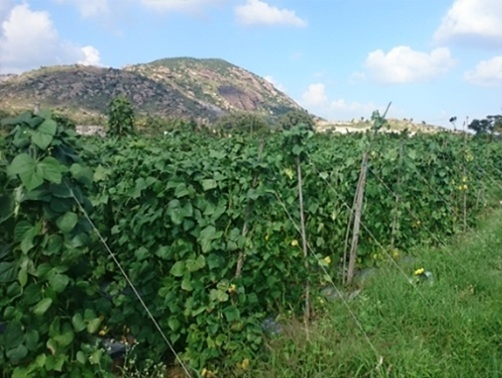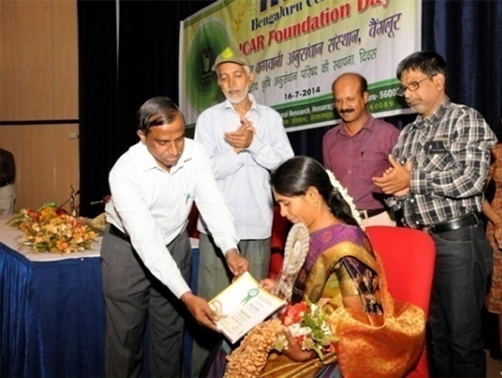
The story started with the introduction of improved tomato variety – Arka Samrat under plastic mulching in her field. Tomato is an important commercial vegetable crop in India. Tomato farmers are facing problems due to the climate change which leads to outbreak of pest and diseases, drought situation, bore wells going dry, labour scarcity etc. In last 3-4 years major diseases like late blight and leaf curl have emerged as devastating problems for tomato crop. Subsequently cost of cultivation has also gone up and labour shortage has a major threat for farming community. Farmers are finding it difficult to cope up with the raised input costs and other related problems. Smt.Saroja is also not an exception from these predicaments.
To mitigate these problems, KVK (IIHR), Hirehalli initiated a demonstration of the technology – Poly mulching with drip irrigation in tomato crop under Front Line Demonstration (FLD) during the year 2013-14 in her field. Earlier, she used to grow only ragi and paddy crops during the monsoon. She was unable to cultivate the profit oriented crops due to the lack of technical knowhow and labour scarcity. She visited KVK, Hirehalli and discussed with scientists about cultivation of tomato. She was advised about the improved tomato production technology developed by IIHR Bengaluru with Hybrid Arka Samrat under poly mulching.
Keeping these suggestions in view, Smt. Saroja decided to go for summer tomato cultivation in her field. She planned for one acre and used the Hybrid Arka Samrat. She transplanted the tomato seedlings on raised beds with ploy mulch film laid with drip irrigation. She has followed package of practices with fertigation and plant protection recommendations as per the suggestions given by the SMS (Horticulture). She used to visit KVK, Hirehalli frequently for suggestions and regular visits were also made by the KVK Scientists to the FLD plot. The practice of mulching helped in moisture conservation, weed suppression and maintenance of soil structure. Mulches also improved the use efficiency of applied fertilizer and use of reflective mulches minimized the incidences of pests and viral diseases. She started harvesting tomato after 65 days after planting and got 32.50 tonnes of tomato per acre and sold them @ Rs.10 per kg. This resulted in a total income of Rs. 3.25 lakhs per acre. The total cost of cultivation for tomato was Rs.60,000 per acre. Thus, she earned a net profit of Rs. 2.65 lakh per acre (BC ratio 5.41). Farmers of surrounding villages were very impressed by the result of this technological intervention of plastic mulching with drip irrigation. Farmers from the village are of the opinion that by following these technologies, they can reduce the wastage of water and fertilizers and also increase the water use efficiency. The incidence of pests and diseases has come down. The number of seedlings required for planting one acre is also less because of the decreased seedling mortality. The fruits obtained are of better quality and colour, which fetched her more prices in the market.
The anticipated increase in income by using poly mulch in crops, especially of high value such as tomato, appropriately justifies the costs of plastic mulch and drip irrigation. However, use of plastic mulch may or may not impact the net profit in case of low value crops, considering the investment in mulching.
To reap more benefits from the investment made on mulch and drip irrigation, multiple cropping (growing a second or even third crop immediately after the previous crop) has become a common practice under plastic mulching. Rotation of Solanaceous crops with a leguminous crop could be a better option in this case. However, proper installation of a good quality plastic mulch and drip tube is absolutely necessary for successful multiple cropping. So, Smt. Saroja was suggested by the KVK to take up second crop as a french beans. She had harvested french bean after 55 days after sowing and gained 3.5 t/acre. She sold them at the rate of Rs.22/kg. The gross income was Rs.77, 000 consecutively, considering the quality of the mulch and drip tubes, she was suggested to go for a third crop – newly released variety of Marigold Arka Bangara from IIHR, propagated through cuttings, in the same polymulch with same spacing. In Marigold, 45 days after planting, she got 1800 kg and sold at the rate of Rs. 20/kg and gross income was Rs. 36,000. By this she earned a total net income of Rs. 0.92 lakh per acre.
Table – showing the income from all the three crops and in total
| Sl. No. | Varieties | Yield | Net Returns (Rs./acre) |
| 1. |
Tomato Arka Samrat |
32.50 t/acre |
2,65,000/- |
| 2. |
French Bean –Pole beans |
3.50 t/ acre |
64,500/- |
| 3. |
Marigold- Arka Bangara |
1800 kg /acre |
27,500/- |
She received innovative farm woman award from IIHR on her success during the recent ICAR foundation day–18th July 2014. Smt.Saroja is acting as a role model for nearby farm women to lead a successful career by following improved horticulture practices.
